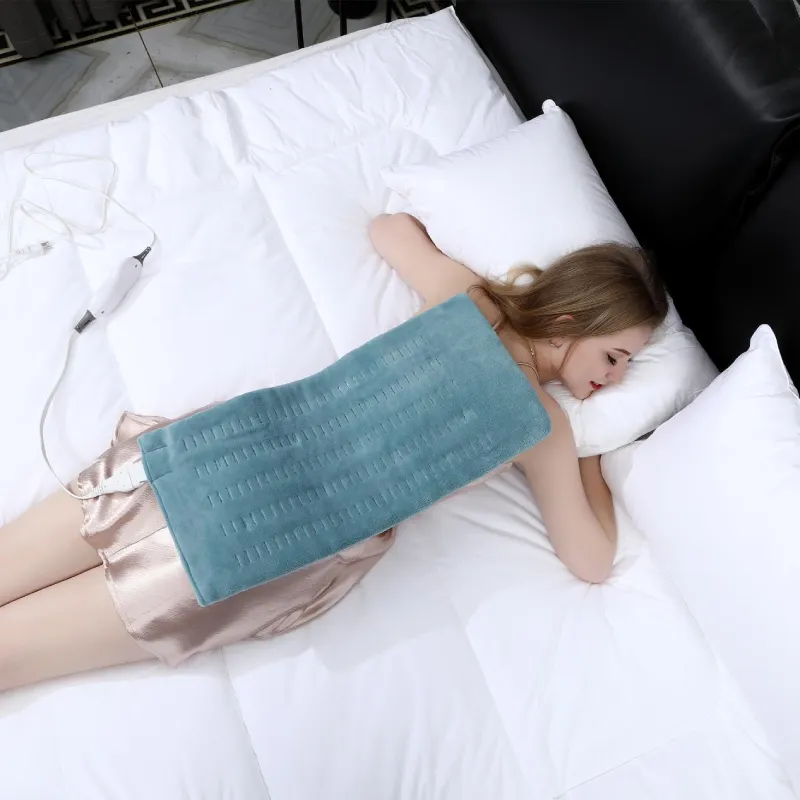
Oct . 17, 2024 15:16 Back to list
electric blanket kwh
Understanding the Energy Consumption of Electric Blankets A Guide to Kilowatt-Hours (KWH)
As the seasons change and the temperatures drop, many people turn to electric blankets for warmth and comfort. With the cozy embrace of an electric blanket, it's easy to forget about the impact on your energy bill. To gain a better understanding of this popular heating option, it’s crucial to delve into the concept of kilowatt-hours (kWh), the unit commonly used to measure electrical energy consumption.
What Is a Kilowatt-Hour?
A kilowatt-hour is a measure of electrical energy equivalent to a power consumption of one kilowatt lasting for one hour. In simpler terms, if you use a device that consumes 1,000 watts for one hour, that would equal 1 kWh of energy. The kWh is the standard unit used by utility companies to bill customers for their electricity usage.
How Electric Blankets Work
Electric blankets are designed with a series of insulated wires that run throughout, generating heat when electricity flows through them. Most electric blankets come with adjustable heat settings, allowing users to select the level of warmth they prefer. Their power consumption can vary based on several factors, including the type, size, and heat setting.
Typically, electric blankets consume between 50 to 200 watts, with higher settings utilizing more electricity. For instance, a blanket set to high might use about 200 watts, while one on low could consume as little as 50 watts.
Calculating the Energy Consumption of Electric Blankets
To get a clearer picture of how many kWh an electric blanket uses, one must consider the duration of use
. Let’s break it down with an exampleAssume you have an electric blanket rated at 150 watts (0.15 kilowatts). If you use this blanket for 8 hours during a cold night, the calculation would be as follows
\[ \text{Energy (kWh)} = \text{Power (kW)} \times \text{Time (hours)} \]
electric blanket kwh

\[ \text{Energy} = 0.15 \text{ kW} \times 8 \text{ hours} = 1.2 \text{ kWh} \]
Thus, using the blanket for 8 hours would consume 1.2 kWh of energy.
If your electricity provider charges, for example, $0.12 per kWh, the cost for that night would be
\[ \text{Cost} = \text{Energy (kWh)} \times \text{Rate (\$/kWh)} = 1.2 \text{ kWh} \times 0.12 = 0.144 \]
So, you would spend about 14 cents for one night’s use.
Energy Efficiency of Electric Blankets
When comparing electric blankets to other forms of heating, it is important to realize that they are generally considered energy-efficient. Unlike whole-house heating systems that significantly increase energy consumption, electric blankets are designed to heat only the person using them. This targeted heating minimizes energy waste and is a more economical choice for keeping warm during cold nights.
Moreover, many modern electric blankets come with features such as programmable timers and automatic shut-off functionalities, which not only enhance safety but also reduce the amount of time the blanket is drawing power.
Conclusion
In summary, while electric blankets are a wonderful solution for staying warm and cozy, understanding their energy consumption in terms of kWh can help you manage and predict your electricity costs more effectively. By keeping track of how long and at what setting you use your electric blanket, you can enjoy its benefits without the shock of an unexpectedly high utility bill. Their energy-efficient design makes them a preferred choice for many households looking for comfort without compromising on energy savings. So next time you snuggle under your electric blanket, you can rest easy knowing you're making a smart choice both for your comfort and your wallet.
-
Innovations and Applications of Modern Electric Heating Blankets
Jul.07,2025
-
Innovations and Applications of Electric Fleece Blanket Systems
Jul.07,2025
-
Functional and Cozy Solutions for Personalized Warmth
Jul.07,2025
-
Essential Comfort and Warmth Solutions: Heated Blanket Variants
Jul.07,2025
-
Enhancing Coziness with Warmth - Centric Blanket Solutions
Jul.07,2025
-
Enhancing Comfort and Warmth: Electric Blanket Solutions
Jul.07,2025
Realted Products



